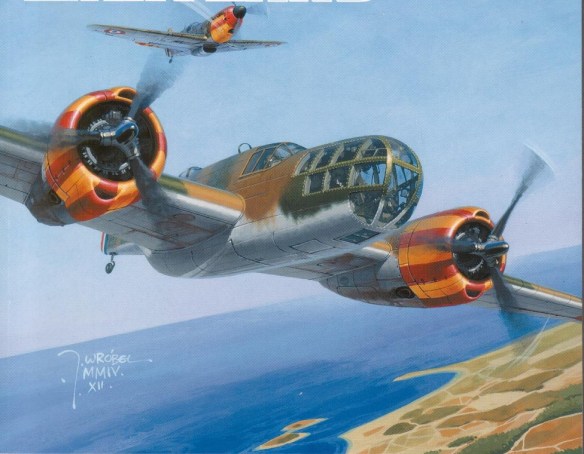
The Maryland was an excellent light reconnaissance bomber designed for the export market. It enjoys the dubious distinction of having served on both sides during World War II.
The Martin Model 167 was built for a 1938 Army Air Corps competition for a new light bomber. The prototype was a low-wing, streamlined affair sporting an exceptionally narrow fuselage. It first flew in February 1939 and exhibited excellent low-altitude performance, but the contract went to Douglas and its A20 Havoc. Seeking to recoup its losses, Martin turned to the export market and found a willing partner in France, then eager to bolster its aging bomber fleet with more modern weapons. A contract for 115 machines was signed, followed by orders for an additional 100 Model 167s that October. By the time of the German invasion of France in May 1940, the French Armée de l’Air possessed 140 Model 167s, which sustained the lowest loss rate of any French bomber. After the country was overrun, several of the surviving aircraft continued to serve with the Vichy French regime; the British Royal Air Force picked up the balance of the undelivered aircraft.
In British service the aircraft became known as the Maryland I, and it was exclusively used as a reconnaissance bomber at Malta and throughout the Western Desert. Ultimately, two British and four South African squadrons employed the craft for several years, often against Vichy machines operating out of Morocco and Syria. It was a Maryland that did the preliminary scouting work over the Italian fleet at Taranto prior to the devastating British raid of November 1940. In combat the Maryland proved fast, strong, and very reliable, but it was no match for modern fighters. By 1943 it was replaced in frontline service by the newer Martin Baltimore bombers and spent the remainder of the war as a target tow and long-range reconnaissance craft. A total of 400 was constructed.
Type: Light Bomber
Dimensions: wingspan, 61 feet, 4 inches; length, 46 feet, 8 inches; height, 14 feet, 11 inches
Weights: empty, 11,213 pounds; gross, 16,809 pounds
Power plant: 2 × 1,000–horesepower Pratt & Whitney Twin Wasp R1830 radial engines
Performance: maximum speed, 304 miles per hour; ceiling, 29,500 feet; maximum range, 1,300 miles
Armament: 6 × .303–inch machine guns; 2,000 pounds of bombs
Service dates: 1940–1944